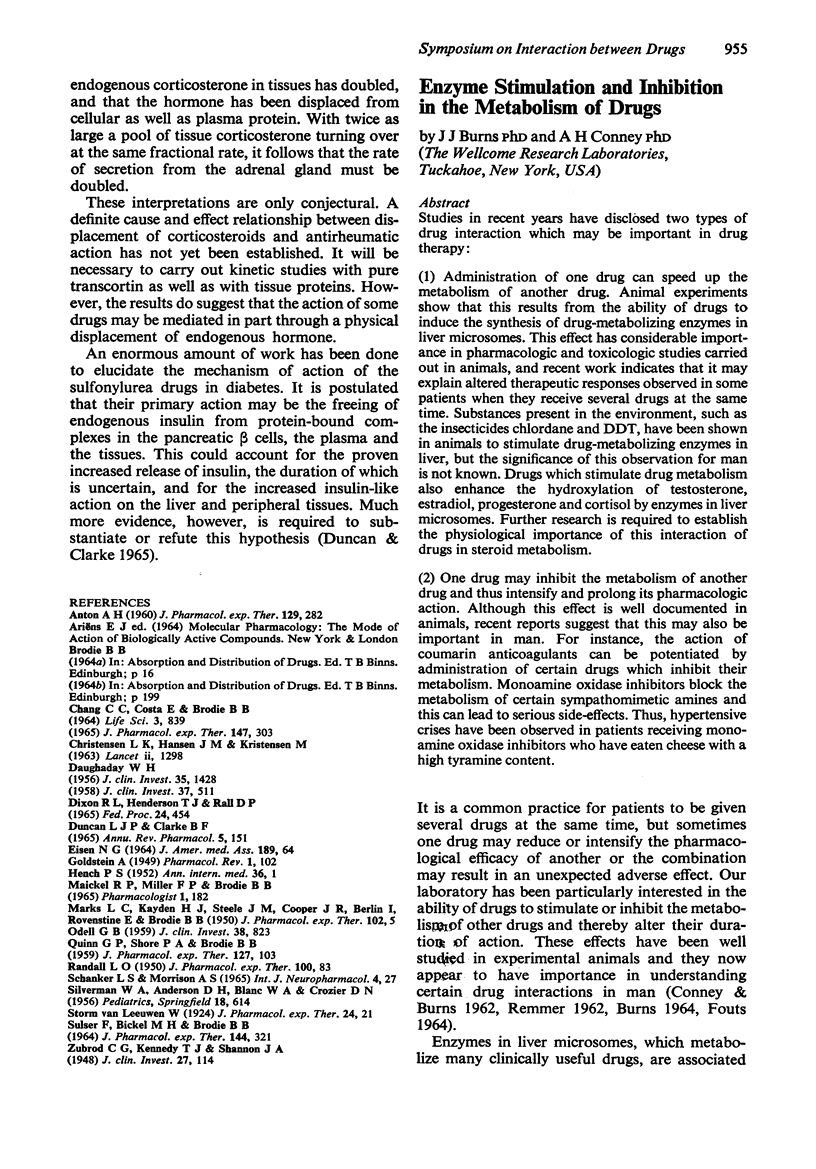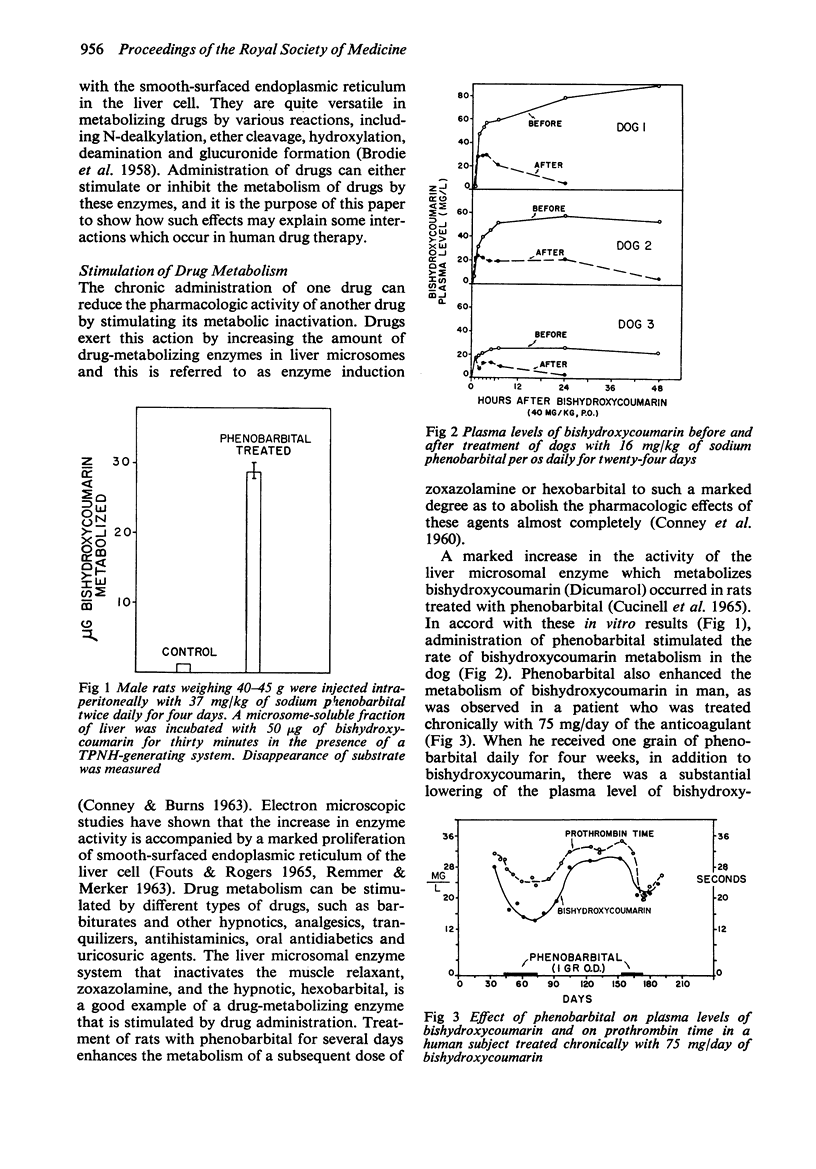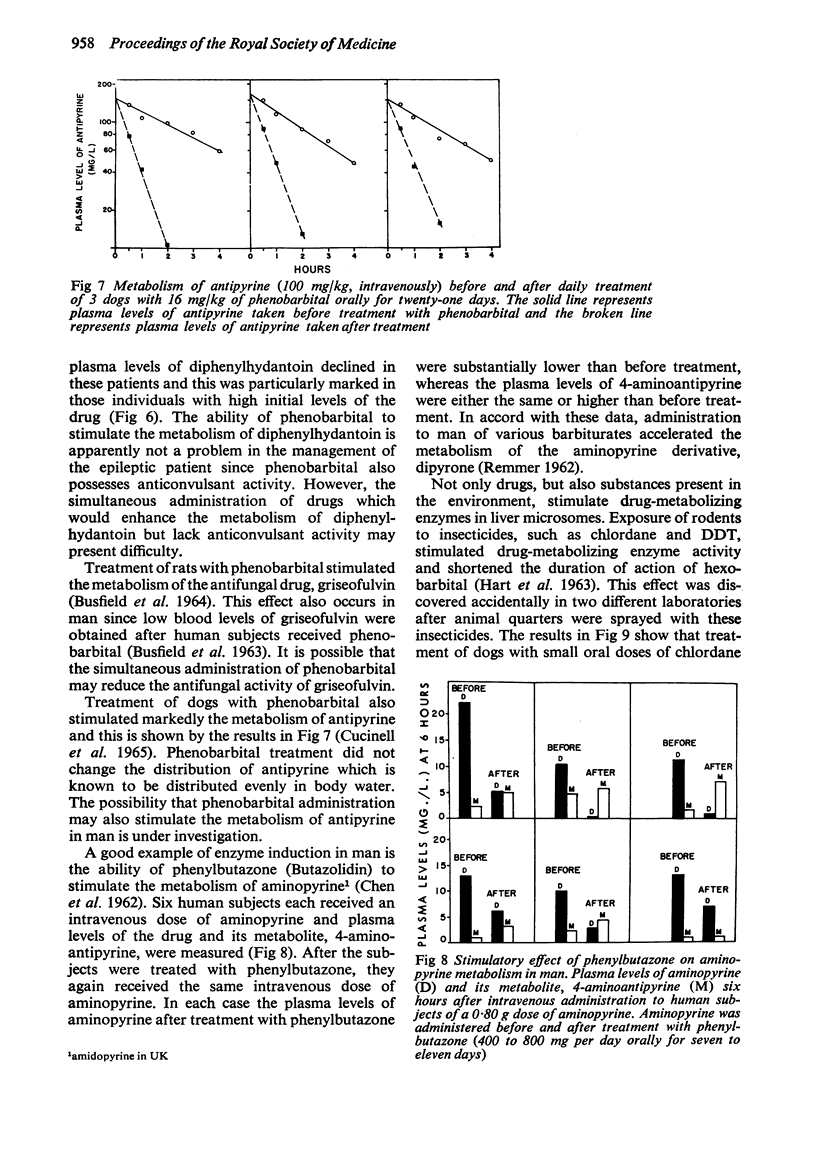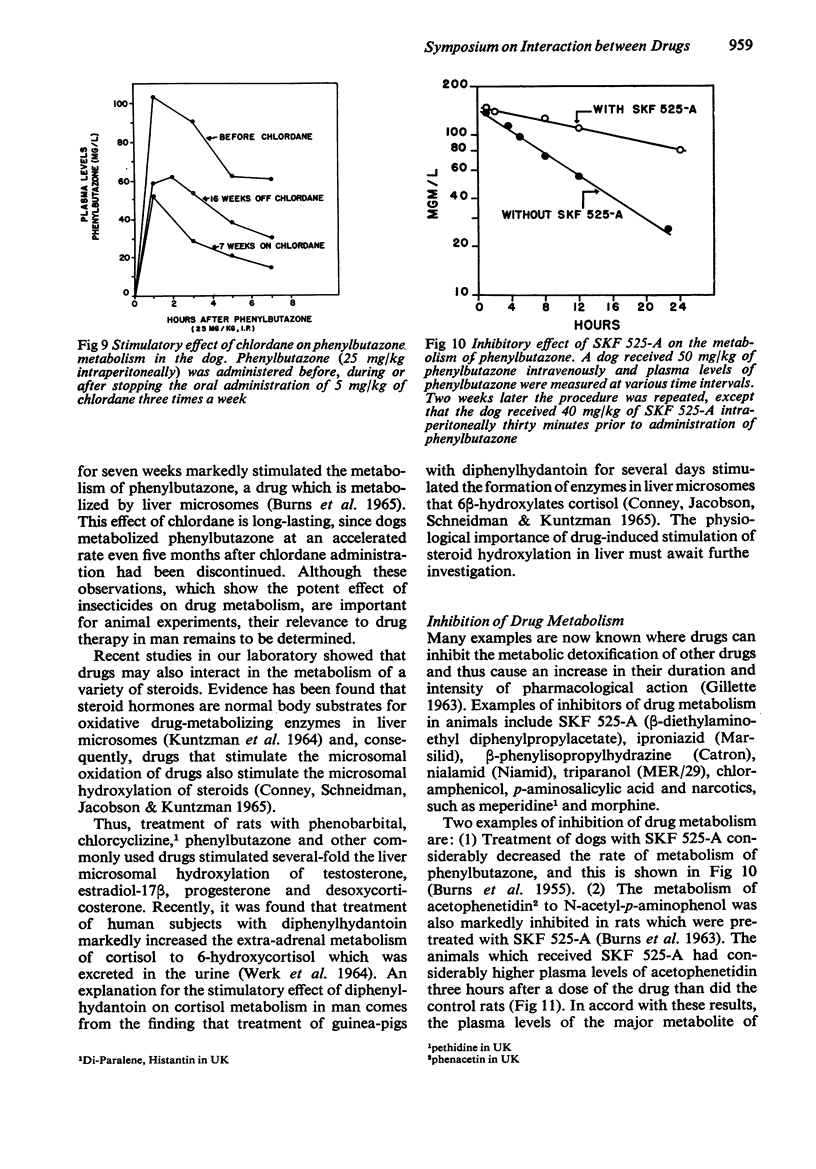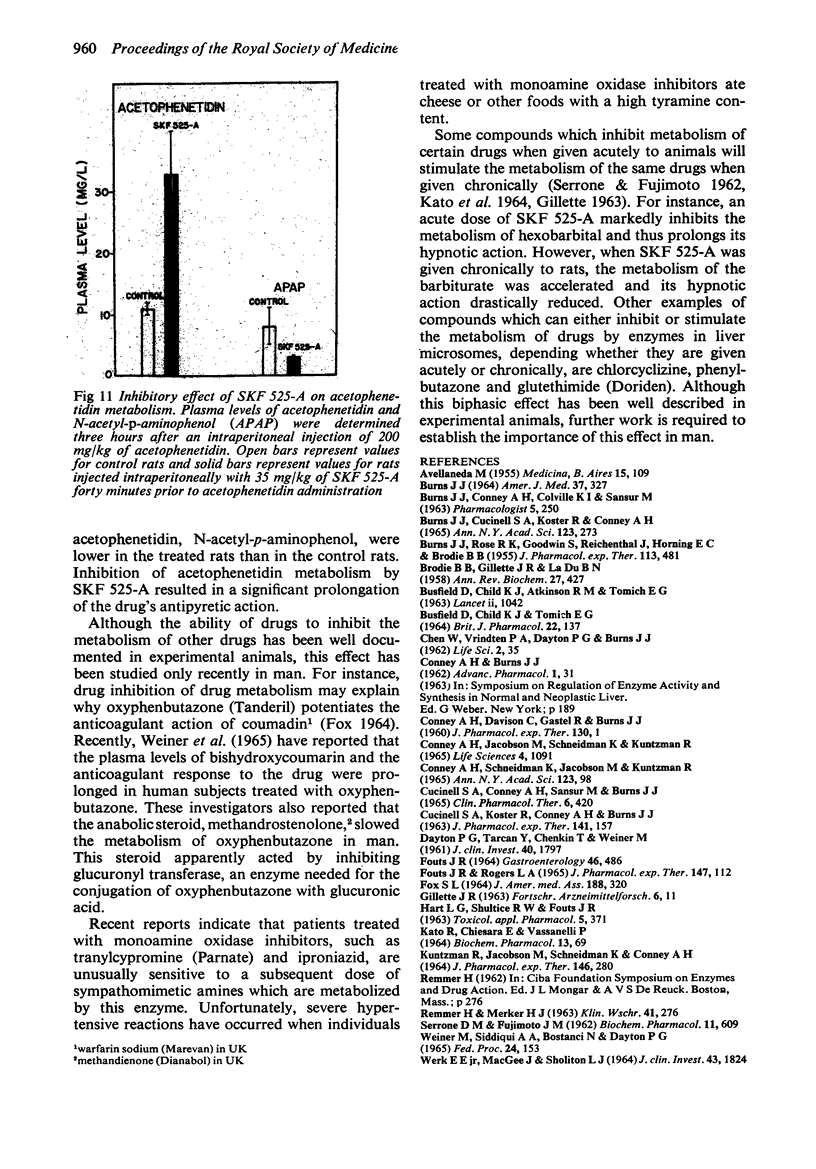Abstract
Studies in recent years have disclosed two types of drug interaction which may be important in drug therapy:
(1) Administration of one drug can speed up the metabolism of another drug. Animal experiments show that this results from the ability of drugs to induce the synthesis of drug-metabolizing enzymes in liver microsomes. This effect has considerable importance in pharmacologic and toxicologic studies carried out in animals, and recent work indicates that it may explain altered therapeutic responses observed in some patients when they receive several drugs at the same time. Substances present in the environment, such as the insecticides chlordane and DDT, have been shown in animals to stimulate drug-metabolizing enzymes in liver, but the significance of this observation for man is not known. Drugs which stimulate drug metabolism also enhance the hydroxylation of testosterone, estradiol, progesterone and cortisol by enzymes in liver microsomes. Further research is required to establish the physiological importance of this interaction of drugs in steroid metabolism.
(2) One drug may inhibit the metabolism of another drug and thus intensify and prolong its pharmacologic action. Although this effect is well documented in animals, recent reports suggest that this may also be important in man. For instance, the action of coumarin anticoagulants can be potentiated by administration of certain drugs which inhibit their metabolism. Monoamine oxidase inhibitors block the metabolism of certain sympathomimetic amines and this can lead to serious side-effects. Thus, hypertensive crises have been observed in patients receiving monoamine oxidase inhibitors who have eaten cheese with a high tyramine content.
Full text
PDF